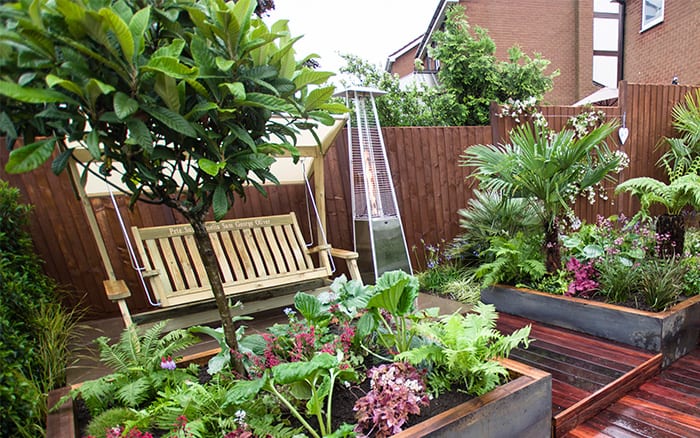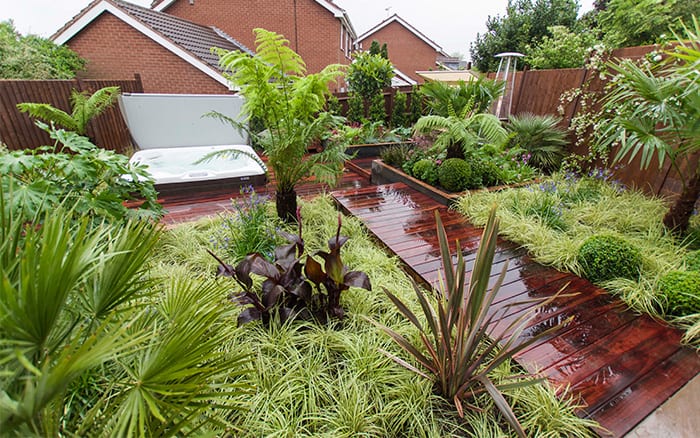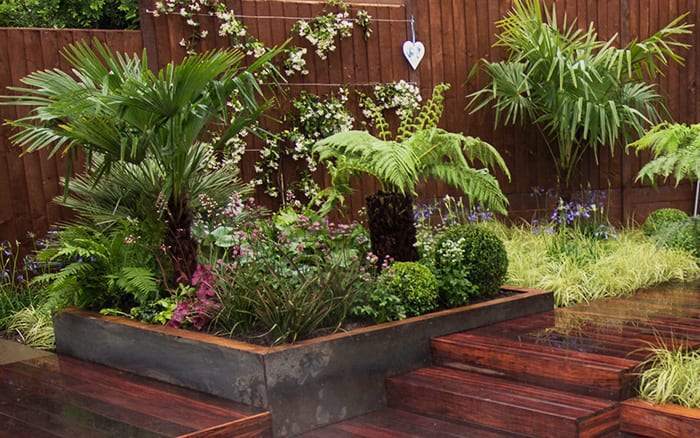It was another great episode for series 4 – here’s what we learned from the show this week. Plus find out what plants we used to get that tropical look!
1 Britain can go tropical
Many people think that tropical plants won’t survive in Britain, but I’m sure Alan convinced you otherwise! The key is to choose varieties with lots of lush green foliage and mix in plants that traditionally thrive in our climate. Then use trees for height and to create a canopy of foliage, so you’re surrounded by a tropical atmosphere.
Plant tropical varieties like palm trees in the spring, to give them time to get their roots established before winter.
Get the look
Try combining palm trees (Chamaerops humilis) with tree ferns (Dicksonia antarctica) with grasses like Carex, Phormium and Amemanthele lessoniana. Then add in flowering plants like hostas, hellebores and Japanese anemone.
Other great tropical plants include Rodgeresia, Dryopteris and Ghost lady ferns. Break up tropical beds with box balls and agapanthus for some structure and height.
2 Sometimes, the soil just needs replacing
If your soil is very thick clay, you could spend years digging in soil improvers and trying to break it up.
But sometimes, you just need to replace it. If you’ve got the budget (and the muscle power), dig it out and add in fresh topsoil and mushroom compost. Your plants will grow so much better, because there is no substitute for good soil.
3 Trees require homework
Everyone can have a tree in the garden, but they need to be thought through. Consider how big the tree will get, as well as the span of its roots, before you buy it. And take into account how long it will take to reach the size you want – sometimes it is better value for money to buy a more mature tree.
Remember not to plant the tree too deep! Keep the soil at the same level as the root stock.
4 Containers can be easy
Every garden needs containers. They are great because you can change the contents according to the season, and rearrange them to give your garden an impromptu makeover!
But they need watering regularly, and feeding every spring. The plant roots have limited soil, so you have to take care of them. If you’re not sure how often to water them, push your fingers a couple of centimetres into the compost – if it feels dry, it needs more water.
Follow Katie’s lead and give pots a top-dressing of gravel and stones. It keeps weeds down, locks in water and gives your containers a designer feel.
5 You can have great hostas
Okay, those hostas Alan showed you were incredible, but you can protect yours too. Gravel on the soil around the plants will deter slugs and snails, who don’t like to crawl over it. Beer traps are also a great way to kill slimy plant-eaters without using pesticides.
But nothing will help as much as going on a slug-hunt after dark with a torch. Pick the blighters off and put them in the beer traps.




Leave a Reply